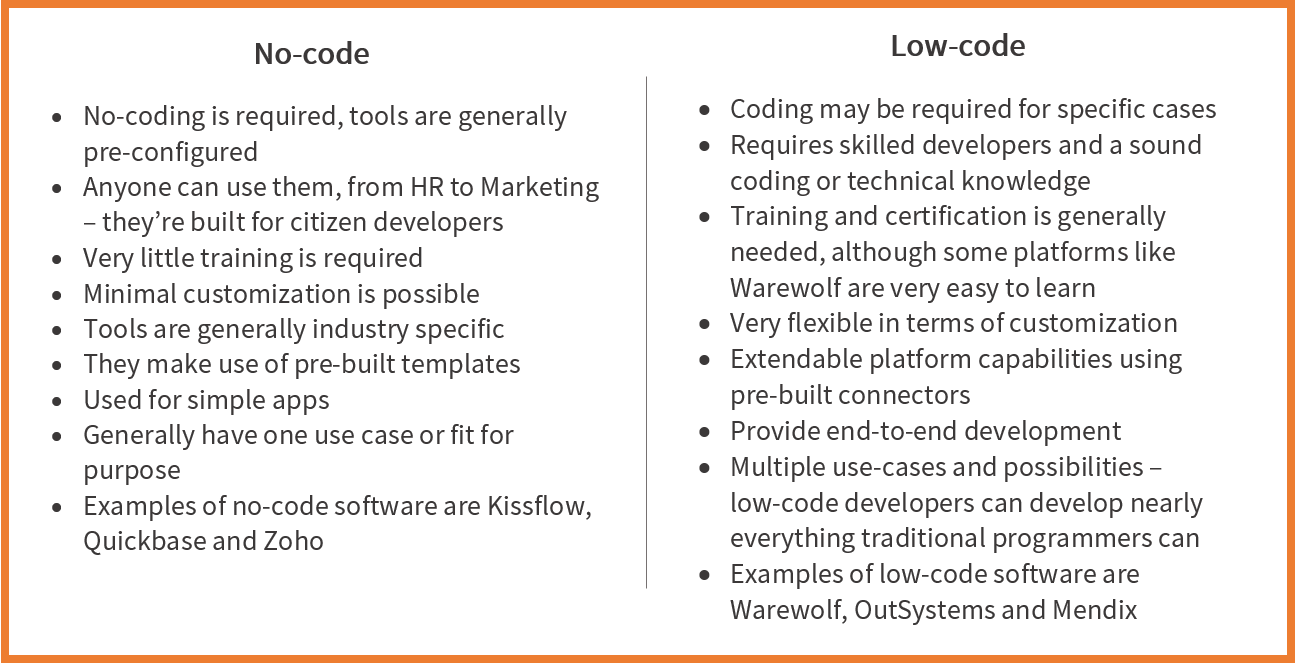Warewolf is a low-code software development platform. But what does this mean? And what’s the difference between no-code and low-code tools?
Similarities:
Visual
Both low-code and no-code platforms are WYSIWYG – what you see is what you get. They give you the ability to see the business process or app you are building visually, not in lines of code. This means that business stakeholders can meaningfully engage with the development team, understand what their systems are doing and have the flexibility to make changes quickly.
Drag and Drop
The tools that you use to develop with work with drag and drop. Select the tool, drag it onto the design surface and connect them in the logical order. These will be configurable to suit your needs.
Pre-built tools and connectors
Depending on the low-code platform you are using, pre-built tools and connectors are ready made in almost all low-code and no-code platforms. Tools come with ready-to-use services and connectors, speeding up development times and allowing for easy integration.
So what is the real difference between No-code and Low-code?
It is evident by highlighting some of the differences between low-code and no-code platforms that there is a subtle, but clear difference. When choosing which platform suits your needs you should take into consideration the complexity of your app, processes and systems, the size of your development team and their capabilities and the speed at which you need to go to market.
As a rule of thumb, no-code platforms are great for “citizen developers” who require something simple for a specific case; low-code platforms are great for software developers who want to build complex systems, aligned to business needs.









Leave A Comment?